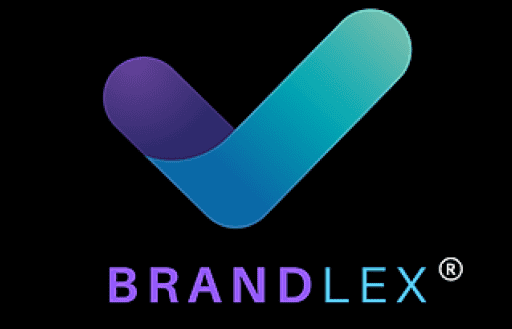Throughout history, human creativity has been the driving force behind every innovation. From observing birds to imagine flight, to using the stars as navigation guides, we have always known how to transform—and transform ourselves—as a species.
Every technological revolution has challenged our models of production, communication, and protection of knowledge. And each time, the law—especially copyright—has had to adapt, resist… and evolve.
Today, we are living through one of those pivotal moments.
Generative artificial intelligence doesn’t just analyze data—it creates content at massive scale, often trained on works created by humans and protected under existing laws and systems (so far). This phenomenon raises new legal, ethical, and strategic questions we cannot afford to postpone.
Copyright Facing Its Greatest Challenges…
Over the centuries, each major technological leap has expanded—and tested—the scope of copyright law:
- With the printing press, came the ability to reproduce texts on a large scale, triggering a new question:
Who owns ideas when they can be replicated infinitely?
Copyright emerged as the answer—not just as protection, but as legal recognition of the human creative act. - With cinema, radio, and television, new expressive languages appeared. The legal framework had to adapt to works that were auditory, visual, ephemeral, and collective.
Could there be rights over a performance? Over a signal transmitted by waves? The answer was an expansion of copyright into what are called “related rights” or neighboring rights. - With the internet, all boundaries blurred—geographic, temporal, and technical. New phenomena emerged: frictionless copying, uncontrolled distribution, and works without visible authorship.
Copyright law faced the challenge of protecting creativity without limiting access to knowledge. - Now, with generative AI, the challenge is even deeper:
What happens when the creator is not human? Models trained on millions of pre-existing works generate text, images, music, video, and code—at scale, tirelessly, and without clear attribution.
It’s no longer enough to identify a copy. We must now ask:
- Is it legal to train AI on protected works?
- Does the output have any rights—and if so, who holds them?
- Who is liable if there’s an infringement?
- Can an author opt out of having their works used for AI training?
These questions demand not just new rules, but a redefinition of principles.
The EUIPO Study
Recognizing the magnitude of the issue, the European Union Intellectual Property Office (EUIPO) commissioned a technical and legal study to examine how generative AI systems interact with copyright law in the EU.
The 2025 report, “The Development of Generative Artificial Intelligence from a Copyright Perspective”, offers an in-depth analysis of the impact of generative AI on Europe’s copyright ecosystem.
It focuses on three key areas:
- Use of protected content as input for AI training, including text and data mining (TDM) practices and the legal challenges tied to opt-out mechanisms.
- Generation of new content as output, which may replicate, imitate, or derive from protected works.
- Emerging technical, legal, and economic solutions such as licensing frameworks, traceability tools, and transparency standards.
The conclusion is clear: the current legal framework is not ready for a technology that learns from millions of human works and produces original content without direct human authorship.
Key Findings
Text and data mining (TDM) is the foundation of AI model training. In Europe, this practice is regulated by Directive (EU) 2019/790 on copyright in the Digital Single Market (CDSM Directive).
Article 4 allows the use of protected works for TDM for commercial or industrial purposes—such as AI model development—provided the rights holder has not expressly opted out. For online content, such reservations must be made appropriately and in machine-readable form, creating both technical and operational challenges for authors and developers.
In practice, these opt-out mechanisms remain weak, fragmented, and lacking unified standards, creating a legal grey area with poor traceability and compliance.
The problem is compounded by large language or image-generation models that may memorize fragments of protected works, producing outputs that partially or fully replicate original creations without authorization. Sometimes this happens even without the user explicitly requesting it—known as content regurgitation.
The risks: unauthorized reproduction and potential infringement. What’s worse, neither the user nor the developer may realize it has occurred.
A new licensing market for datasets is emerging, where rights holders can negotiate specific conditions for authorizing—or prohibiting—the use of their works for AI training. However, robust frameworks are still lacking. Traceability and algorithmic transparency are essential to prevent infringements, yet current tools are still under development and lack real interoperability across platforms.
What Can Organizations Do?
This is not just a challenge for the publishing or creative industries. Companies, organizations, and institutions also own original content—presentations, reports, designs, code, internal documentation—that may be used without their consent to train AI models.
At BRANDLEX, we recommend an active and strategic approach:
✅ Audit your digital assets – Identify content that may have been used as training data.
✅ Activate rights-reservation mechanisms through technical settings (robots.txt, REP, TDMRep, C2PA) and, most importantly, clear licensing terms.
✅ Demand transparency and traceability when contracting services that use generative AI.
✅ Consider licensing your content securely, controlling both usage and conditions.
✅ Train your internal teams on this emerging area of risks and opportunities.
New Challenges Require New Leadership
The rules are changing. Decisions we make today will shape how innovation and intellectual property protection are balanced tomorrow.
At BRANDLEX, we believe the challenge is not to halt AI but to lead its responsible use—building a clear, ethical, and sustainable legal framework where artificial intelligence and human creativity can coexist.
If your organization wants to anticipate these changes, protect its intangible assets, or explore strategic licensing for AI use, we are ready to support you.
📩 Let’s Talk.
From Spain and Latin America, we advise companies seeking to innovate with legal security in intellectual property, artificial intelligence, and emerging technologies.
🌐 www.brand-lex.com | ✉️ info@brand-lex.com | 🔗 LinkedIn: BRANDLEX
